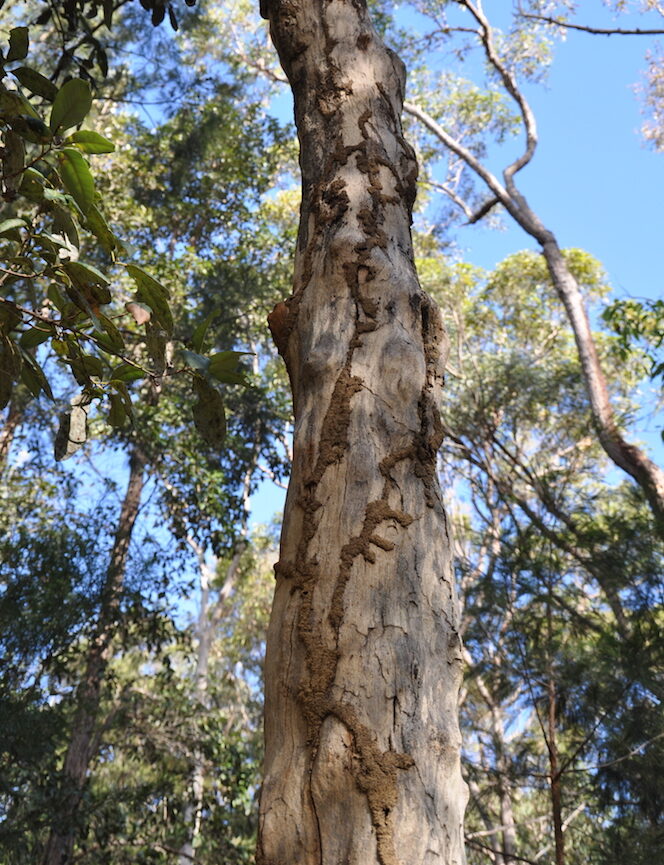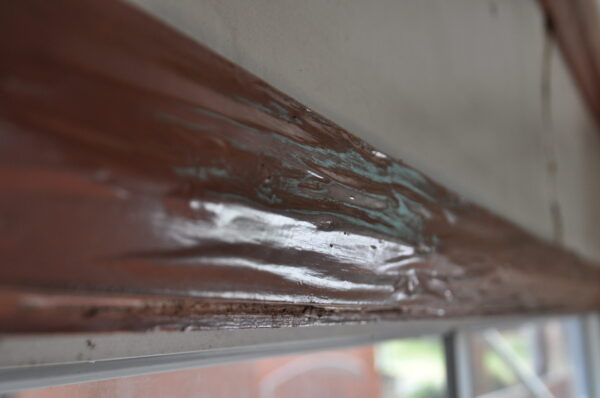Worried you might have termites?
Professional termite inspections - Adelaide
What should you do if you think you have termites?
If you’re worried you might have termites stay calm, there’s no need to panic!
Significant termite damage takes many months and so a few days to make a considered decision on the best course of action isn’t going to make any difference to the amount of damage.
If you suspect you have termites, it is important that you do not disturb or spray the termites, as it can make it more difficult to assess the problem and get control.
Just take a deep breath and give us a call immediately to arrange an inspection.
Call now to arrange an inspection
Our comprehensive termite inspection
All our termite inspections are carried out according to Australian standards AS 3660.2. The purpose of the inspection is to determine:
- Whether there are any active termites present, the level of activity, identify the species and locate the termite entry points
- The extent and location of any termite damage
- Evidence of any previous termite treatment
- If there are any conditions conducive to termite attack
What areas of your home and property do we inspect?
- Inspect all buildings, structures and attachments within the property boundaries. This includes full inspection every room in turn and of the roof void and subfloor areas (if present)
- Inspect timber fences, decks, pergolas, outbuildings, trees and landscape timbers up to 30m radius from the mail building (within the property boundaries)
It is important to understand that we can only inspect areas to which we can access, so please make sure we can access all rooms, the roof void and sub-floor.
What equipment do we use in a termite inspection?
It’s also important to remember that the standard termite inspection is a visual termite inspection – we don’t go breaking open any walls and we are not allowed to move heavy furniture which may be blocking access to inspect walls.
However, we do use a range of devices to help us work out what might be happening behind the walls. There are three pieces of equipment we regularly use:
- Donger: a device to tap /sound wood construction elements for damage
- Moisture meter: for finding leaks and areas of moisture which could indicate termite activity
- Termatrac: the latest termite detection device

What's included in our comprehensive inspection report?
The key output from the inspection is a comprehensive written report (minimum 16 x A4 pages) with photos detailing:
- Any visual evidence of any current termite activity (species, location, extent)
- The extent and location of any termite damage
- Recommendations for any additional inspections
- Any environmental conditions or building construction faults that make your property more likely to come under termite attack
- Recommendations for solving construction faults and environmental issues to reduce the changes of a termite attack
- The overall risk of the property suffering a termite attack.
- Any termite management systems already in place and recommendations on its maintenance requirements (if the system is still active)
- Recommendations for a termite management plan to eliminate any current infestation and protect the property from future termite attack
Why choose Hindmarsh Pest Control?
- All our inspectors are experienced, fully qualified, licensed and insured
- You can be confident we have carried out a comprehensive inspection
- We take time to carry out your termite inspection
- A comprehensive termite inspection takes at least 1.5 hours on average (depends on size of property, number of rooms and presence of sub-floor / roof void).
- We provide a comprehensive inspection report and discuss any issues
You will receive a discount on any general pest treatment carried out at the same time as the termite inspection.
Call now to arrange an inspection
TESTIMONIALS
What do our clients say about us
Signs of termite activity
Although a professional termite inspection is a must to pick up the subtle signs of a termite infestation, there are 3 key signs of termite activity that every homeowner should know:
Live termites
If you find live termites on your property your house could be under attack and there is a nest nearby.
You may see worker termites (“white ants”) feeding on wood or inside their mud tubes, or flying termites in the evening on humid nights, or more likely their dropped wings on the floor in the morning.


Termite mud tubes
Mud tubes are built by termites for protection. They can be found on trees, fences, other wood items, entry points to your home, in the sub-floor and roof void.


Termite damage
Other than the obvious damage of collapsed timbers, there can be more subtle signs of termite damage, such as rippled paintwork, spongy floorboards and doors not shutting properly.
Termite damage image: Obvious termite damage
Rippled paintwork image: Caption: Rippled paintwork is a potential sign of termite activity.


If you spot something suspicious, call Hindmarsh Pest Control immediately to arrange an inspection.
